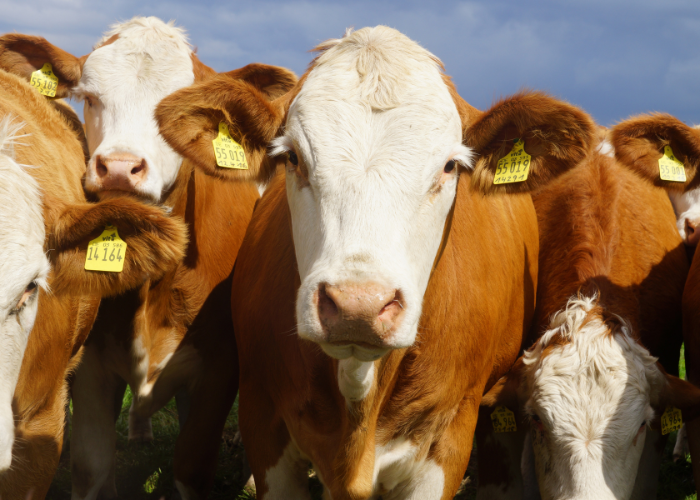The circularity of methane emissions in livestock farmingINTERVIEW BY ISABELLA CECCARINI WITH PIETRO PAGANINI - RINNOVABILI
- 10 December 2024
- Posted by: Competere
- Category: Senza categoria

Isabella Ceccarini interviews Pietro Paganini about the role of livestock in greenhouse gas emissions. Methane emissions from livestock are considered harmful to the environment. More accurate metrics could change the debate, as not all greenhouse gases have the same impact or origin.
Read the interview published in Rinnovabili or directly below.
In 2023, Europe recorded an encouraging drop in greenhouse gas emissions. Would distinguishing between different types of pollutants make action more effective
The fight against climate change is yielding tangible results: in 2023, greenhouse gas emissions in Europe decreased by 3.2% compared to 2022. This reduction is a positive milestone, but it also serves as a starting point for more targeted environmental transition policies. However, it is essential to rely on a scientifically accurate public debate that employs appropriate terminology and metrics. Not all greenhouse gases have the same impact or origin. Too often, carbon dioxide (CO2) and methane are conflated, overlooking their fundamental differences. CO2 remains in the atmosphere for centuries, whereas methane has a much shorter lifespan, lasting only 9–12 years. The distinction between stock gases, which accumulate over time, and flow gases, which follow rapid natural cycles, is crucial to understanding and effectively addressing the impact of emissions.
Methane emissions also require further differentiation. On the one hand, there are fugitive emissions from fossil sources—losses during extraction, transport, and distribution of fossil fuels, as well as those from coal mines, particularly abandoned ones—which account for 33% of anthropogenic methane emissions and constitute a net, unproductive loss. On the other hand, there are biogenic emissions, linked to natural processes such as enteric fermentation and manure management, responsible for 31% of anthropogenic methane emissions. Unlike fossil methane, biogenic methane is part of a short-term natural cycle: it is released, oxidizes into CO2, and is reabsorbed by plants. Recognizing these differences is essential to crafting more effective policies that reflect the nature and actual impact of various emissions.
Does the public—and more importantly, policymakers—perceive the distinction between industrial and livestock emissions?
Unfortunately, no. Public and political perceptions remain muddled, fueling polarization in the environmental debate. Industrial sectors, raw materials, and food production are often criticized without solid scientific foundations. For instance, livestock is frequently accused of significantly contributing to global methane emissions, ignoring the critical distinction between biogenic and fossil methane.
Livestock not only transforms biomass unsuitable for human consumption into high-quality proteins like meat and milk, ensuring global food security, but also adopts circular economy practices to reduce environmental impact, such as producing biogas from manure—a process that reduces reliance on fossil fuels. Recent innovations, such as using dietary additives to limit enteric fermentation, further contribute to reducing net impacts. These advancements demonstrate the sector’s commitment to emission reduction but are often overlooked in a debate dominated by ideological simplifications. Recognizing these efforts is vital for developing more balanced and informed environmental policies.
You argue that livestock emissions are part of a natural circular cycle. How so?
Methane emissions from livestock are part of a natural circular process within the short-term carbon cycle. Plants absorb carbon dioxide from the atmosphere through photosynthesis, converting it into biomass that feeds ruminants. During digestion, these animals emit methane, which oxidizes back into CO2 within 9–12 years. This CO2 is then reabsorbed by plants, completing the cycle. In contrast, fossil methane, derived from underground reserves, introduces additional carbon into the atmosphere, increasing greenhouse gases.
Livestock does not add new carbon but recycles it within a closed system. With advanced management practices, biogenic methane can align with sustainability goals, contributing to the natural balance without exacerbating global warming.
What concrete actions can the livestock sector take to reduce its environmental impact? What approach should policymakers adopt?
Although methane has a short atmospheric lifespan, it remains a significant greenhouse gas. The EU, through the 2020 Global Methane Pledge (an agreement signed by 159 countries at COP26), aims to reduce methane emissions by 30% by 2030. This goal could largely be achieved by controlling fugitive emissions (i.e., accidental releases or leaks from aging facilities), which represent a major environmental loss. However, it is crucial to adopt more advanced metrics that go beyond the concept of “CO2 equivalent”. Comparing biogenic methane from livestock to fossil methane from energy industries is flawed—akin to equating cigarette smoke with the smoke generated by cooking a meal, an essential activity.
The livestock sector is already contributing by reducing emissions through innovations such as dietary additives, manure management for biogas production, and circular practices that optimize resources. Additionally, regenerative livestock farming practices enhance soil carbon sequestration on farms, further distinguishing livestock emissions from industrial ones. While livestock emissions are largely offset by carbon sequestration, industrial emissions are not, making it essential to consider overall balances rather than simple impacts.
Policymakers must support these efforts with informed and balanced approaches, distinguishing emission sources and acknowledging progress. Only then can methane reduction goals be achieved while ensuring environmental sustainability, food security, and circular economy practices.
Read Zootecnia: distinguere le vere fonti di inquinamento>>>
